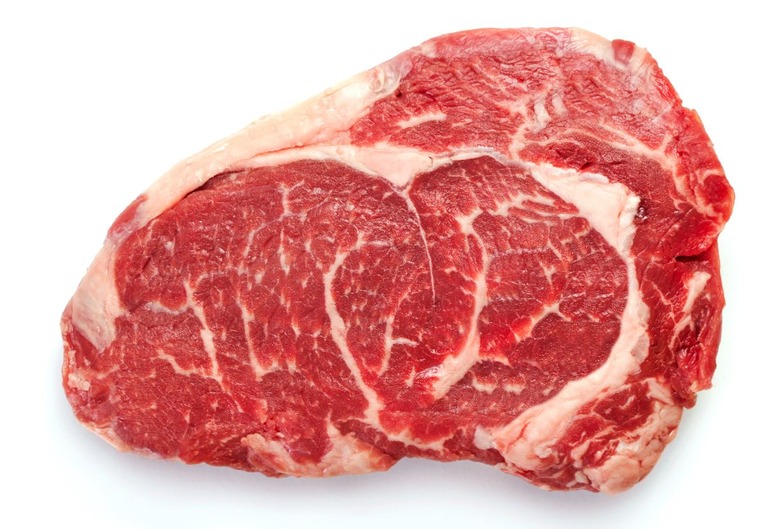The 1 Difference Between USDA Prime Steak And Everything Else
You've most likely heard the phrase "USDA Prime" used to describe the really high-quality meat served at good steakhouses, but what exactly does that term mean? You can be forgiven for not knowing, but when in terms of steak, it's certainly true that Prime is best.
There are actually eight grades of beef, with Prime at the top of the heap. According to the American Meat Science Association, beef is graded according to "the expected eating characteristics (tenderness, juiciness, and flavor) of the cooked product." But when it comes down to it, there's one characteristic that Prime beef has that other steaks don't: a whole lot of marbling (intramuscular fat) between the 12th and 13th ribs (the area inspected by the grader). The more marbling, the more tender and juicy the final product will be.
The three main grades of beef that inspectors separate carcasses into are Prime, Choice, and Select. Prime beef comes from young, well-fed cattle and has abundant marbling. Choice beef is also high-quality, but has less marbling than Prime. Select beef isn't as well-marbled as Choice, and is best when marinated or braised.
Only about 3 percent of all beef is Prime, about 70 percent of all beef is Choice, and about 20 percent is Select. The remaining beef falls into five lower categories: Standard, Commercial, Utility, Cutter, and Canner. Standard beef comes from younger cows but is "practically devoid" of marbling; Commercial beef has a "moderate" amount of marbling but comes from older cows (and these are the lowest two grades you'll find at the supermarket).
And as for Utility, Cutter, and Canner, well, the less said about them the better. These tend to find their way into cheap ground beef, hot dogs, and dog food.
